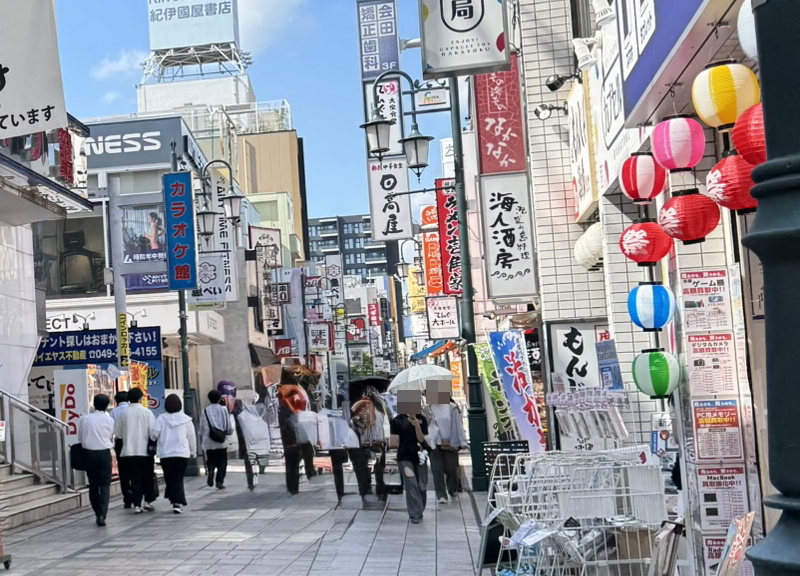Coexistence of urban development and historical landscapes in the area around the station and Clare Mall
In recent years, large-scale urban redevelopment has been advancing rapidly around Kawagoe Station and Hon-Kawagoe Station, dramatically transforming the surrounding landscape and lifestyle.
What used to be a quiet area centered on traditional homes and small shops has been replaced by modern commercial buildings, high-rise condominiums, and shopping complexes.

Rapid Urban Redevelopment Around Kawagoe Station
Pedestrian decks now connect both the east and west exits of Kawagoe Station, improving mobility and accessibility. This transformation has enhanced the station’s role as a hub for living, tourism, and business, strengthening its importance within the region.
Modernization and Local Economic Revitalization
The redevelopment efforts are not limited to improving convenience; they also aim to revitalize the local economy and create a more comfortable urban environment.
New shopping centers, restaurants, and service facilities attract both locals and tourists, while infrastructure improvements help the city handle the increasing number of visitors every year.
By blending historical charm with modern infrastructure, Kawagoe continues to evolve as a city where tradition and modernity coexist, creating a more livable and vibrant community for residents.
The Coexistence Challenge: History vs. Modernity
Despite these positive developments, the city now faces a major challenge—how to balance urban growth with historical preservation.
Walking from Kawagoe Station through Crea Mall to the Kurazukuri (warehouse-style) district of Ichibangai, one can clearly feel a dramatic shift in atmosphere—from modern city streets to the nostalgic scenery of “Little Edo.”
This sharp contrast is both fascinating and complex. It raises an essential question: How can modern convenience and historical charm coexist without compromising each other?
Crea Mall as a Symbol of Urban Transition
Crea Mall, which developed from the Showa to Heisei periods, is now one of the most vibrant shopping streets in Saitama Prefecture.
Stretching about 1.2 kilometers, it features fashion boutiques, cafés, and large retail chains that attract a younger generation. However, compared with the historic streets of the Kurazukuri zone, some say it lacks the aesthetic harmony that defines Kawagoe’s traditional identity.
This contrast between economic vitality and historical unity symbolizes the ongoing transformation of the city.
Toward a Balanced Future: Preservation and Progress
Today, Kawagoe stands as a national model for cities seeking to balance “landscape preservation” and “economic development.”
The local government has introduced landscape ordinances, promoted the preservation of historical buildings, and started underground wiring projects to protect the city’s traditional views.
However, achieving this harmony requires careful coordination and continued dialogue among residents, businesses, and city officials.
Kawagoe’s urban planning efforts represent a modern dilemma—a delicate balancing act between past and present, where history must be preserved while the city continues to grow. Through thoughtful design and community effort, Kawagoe aims to remain a place where the past and the future coexist beautifully.

